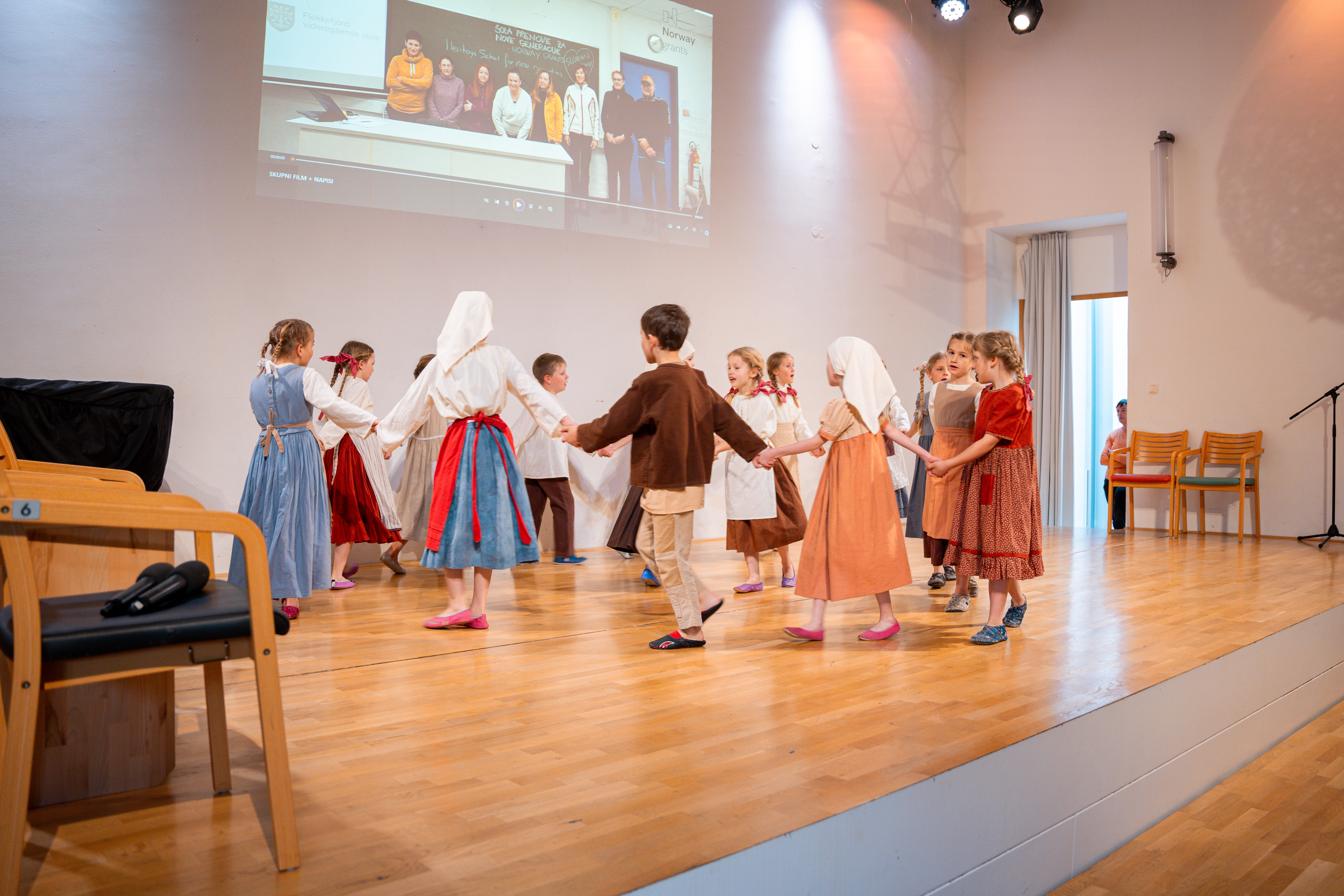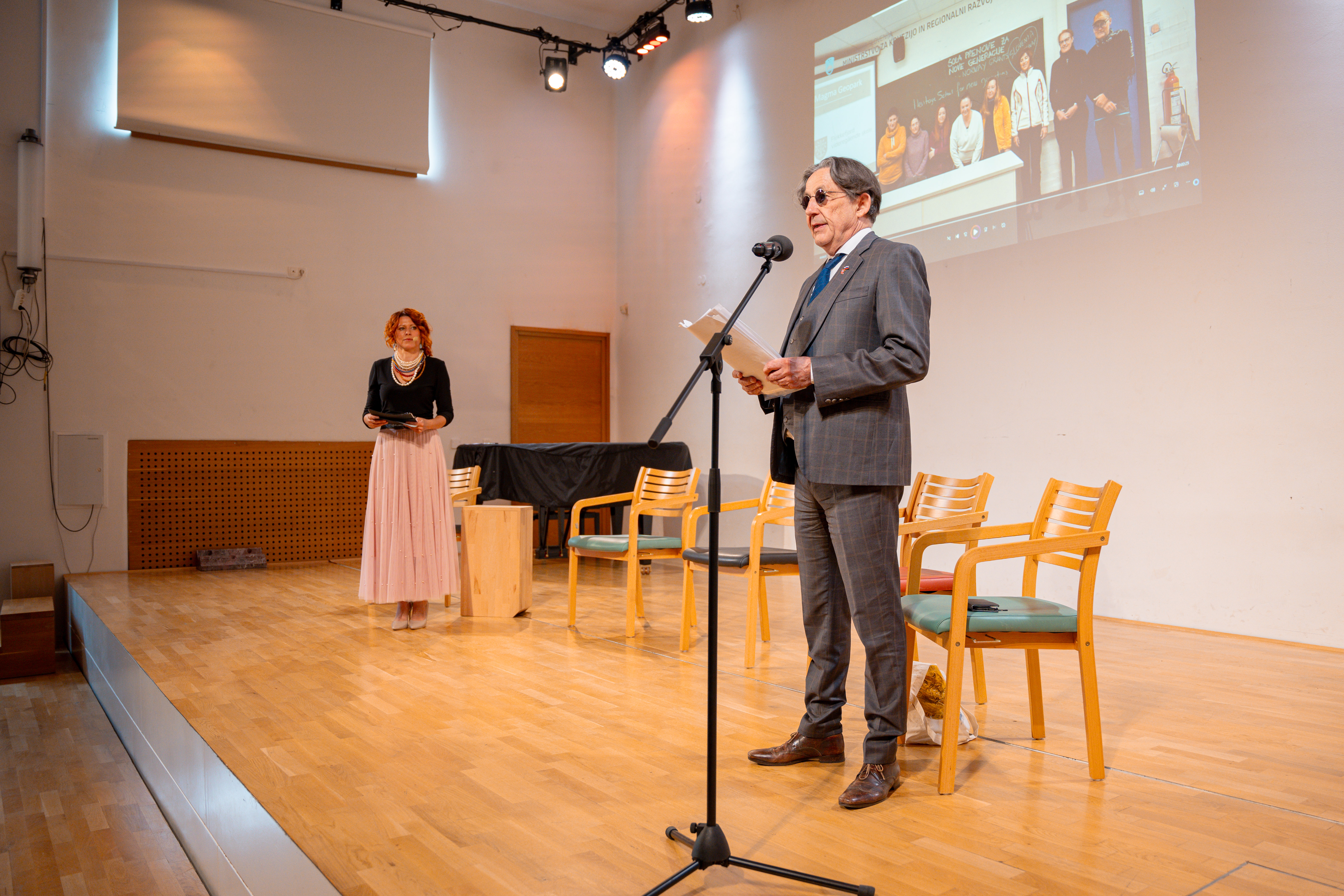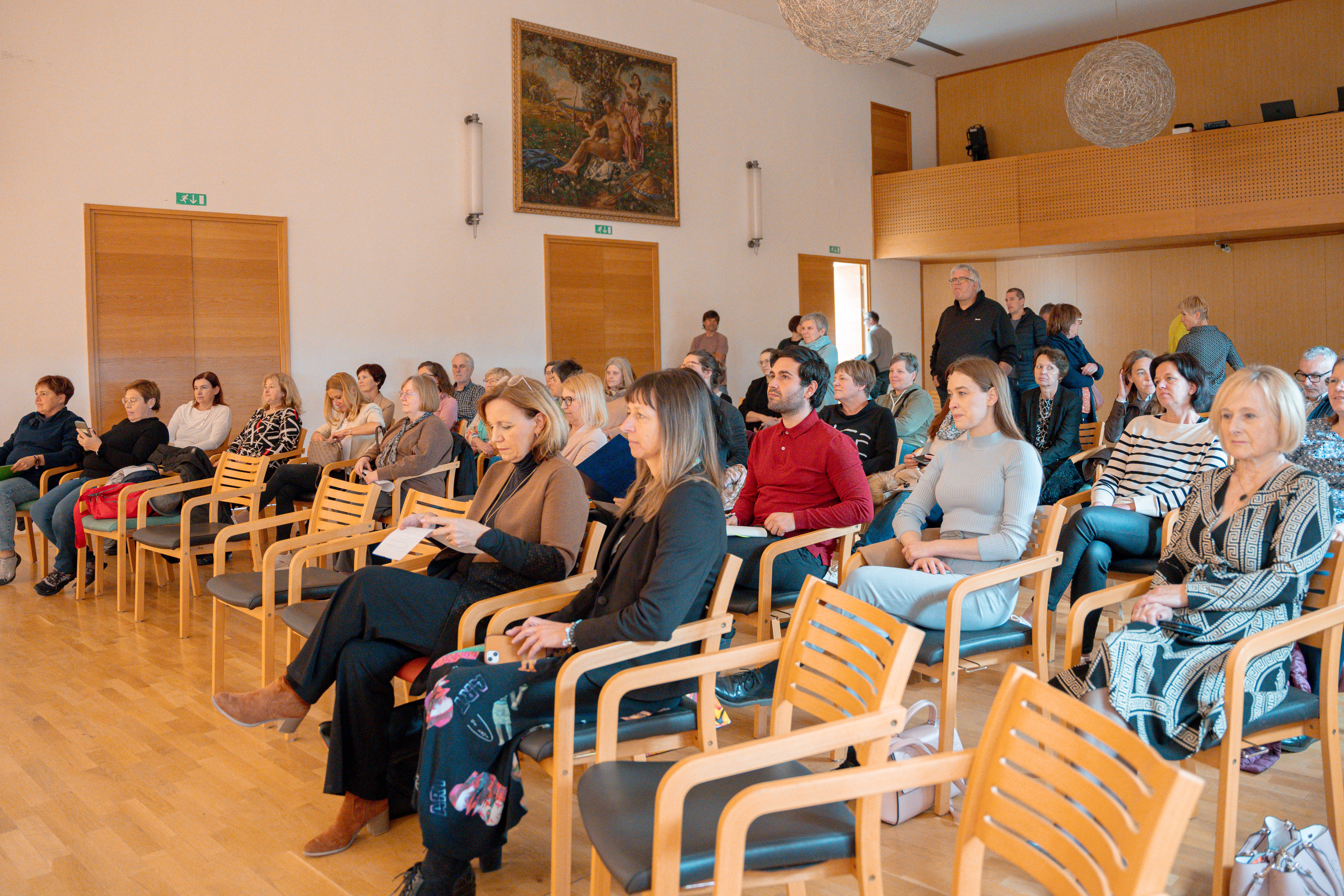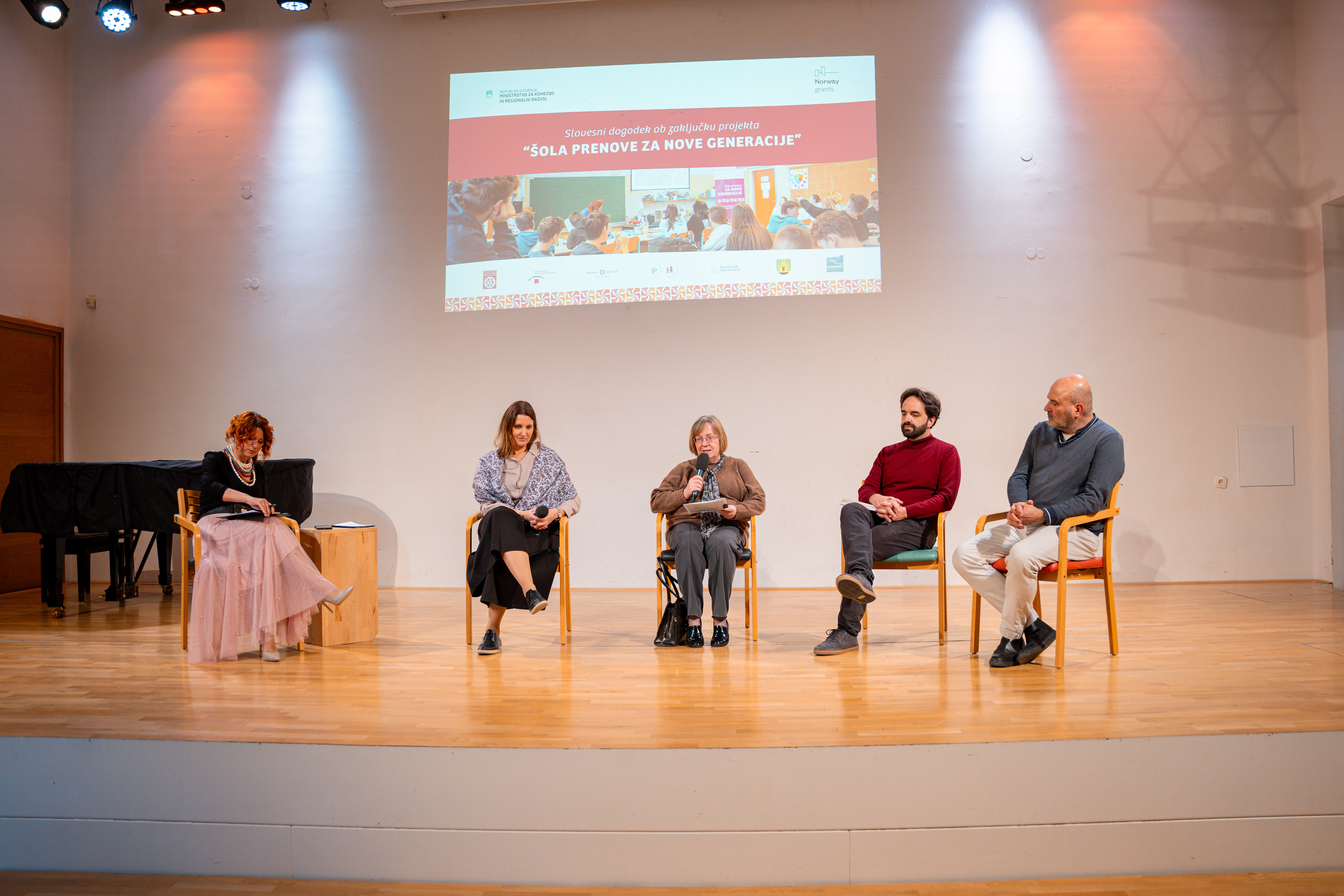
19 April 2024 – The project Heritage School for the New Generations, co-financed by the Norwegian Financial Mechanism, was celebrated with a closing ceremony on Wednesday, 17 April 2024, in Škofja Loka.
The more than sixty guests were addressed by Herman Baskår, Deputy Ambassador of the Kingdom of Norway, Jadranka Plut, Head of the Financial Mechanisms Sector at the Ministry of Cohesion and Regional Development and Tina Teržan, Vice-Mayor of the Municipality of Škofja Loka.
Herman Baskår, Deputy Ambassador of the Kingdom of Norway, expressed his support for the project and pointed out that “the integration of cultural heritage in education is essential, as it offers students a deeper understanding of their own heritage and heritage of others, it promotes respect, empathy and tolerance.”

Jadranka Plut, Head of the Financial Mechanisms Sector at the Ministry of Cohesion and Regional Development, pointed out in her speech that “a systematic change in the community’s attitude towards cultural heritage and its renewal as a competence for work in the 21st century is only possible through the education of the younger generations.”
After welcoming speeches, a video projection of the project’s achievements was presented to the audience, in which materials for new teaching practices were produced through the joint efforts of all project partners. These include 18 teaching materials with didactic aids for the integration of cultural heritage in primary school subjects from art to mathematics. The project has demonstrated through neurological testing of pupils that the introduction of cultural heritage content can make lessons more interesting, increase pupils’ understanding of the material and engagement, and improve pupils’ concentration, especially when they encounter cultural heritage in an environment outside the classroom and are encouraged to work creatively.

A didactic corner has been created at the Elementary School Ivan Grohar, co-created by the pupils, which will be expanded with new content and exhibitions in the next school year. The investment in the premises of the former 16th-century town hall in the old town centre of Škofja Loka has created the Learning Lab area. In the future, it will be used for workshops on heritage, the crafts that support it and the values that cultural heritage transmits in our lives.
One of the first workshops intended for teachers on how to actively bring the heritage and the crafts associated with it to the attention of pupils. Cultural heritage provides a rich and varied content, as it encompasses the entire legacy of human activity – from settlement patterns, the co-creation of cultural landscapes, the establishment of settlements and buildings, the development of construction and the processing of materials, to the preservation of craft skills and the preservation of a culture of living.

The event was enlivened by a performance by a pupil folklore group from the Elementary School Ivan Grohar. The pupils, dressed in traditional costumes, sang, and danced on stage.
The event continued with a panel discussion. Discussion was attended by Špela Spanžel, Director General of the Directorate for Cultural Heritage at the Ministry of Culture, Dr Vilma Brodnik, National Education Institute Slovenia, Matevž Granda, editor of the magazine Outsider, and Aleksander Ostan, professor at the Faculty of Architecture, University of Ljubljana.

The discussion that followed highlighted the current views on the state and understanding of the role of cultural heritage in Slovenia, the shortcomings, progress, and challenges for the future, which should be focused primarily on bringing cultural heritage closer to young people at all levels of education, as well as to pre-school children.
The project involves the Association of Historic Towns of Slovenia, the University of Primorska, the Institute for the Protection of Cultural Heritage of Slovenia, the School Center Škofja Loka, the Elementary School Ivan Grohar, the Municipality of Škofja Loka and the Norwegian partner MAGMA Geopark AS.